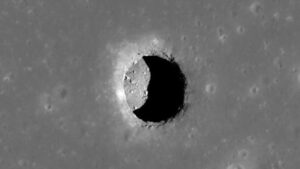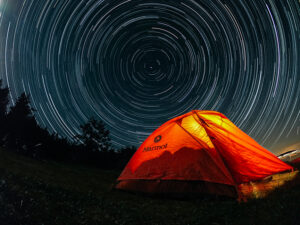Bringing an all-new meaning to the phrase, “we will rock you,” Queen guitarist and lyricist Brian May was an instrumental (heh) part of NASA’s recent headline-grabbing asteroid sample retrieval mission.
That’s because May, in addition to recently being voted the greatest rock guitarist of all time by Guitar World, is also an accomplished scientist with a doctorate in astrophysics.
According to Space.com, it was May’s interest in stereoscopic imagery that proved so useful to the mission. It entailed landing a probe on Bennu, the asteroid most likely to hit Earth at some disturbingly vague point in the future.
Turns out that the surface of Bennu was far rougher and more challenging to land on than the OSIRIS-REx team (as the probe is dubbed) thought. A stereoscopic camera would help because it would allow a 3D view of the asteroid’s surface, making it easier to land safely.
The only problem? The probe wasn’t equipped with a stereoscopic camera.
Enter May, who was tapped for the project in 2019. May has a technique of creating stereoscopic imagery using images taken by a conventional camera. With May’s images in hand, the rest of the OSIRIS-REx team remotely landed the probe safely, collected the samples, and headed home.

Artist’s concept of NASA’s OSIRIS-REx spacecraft collecting a sample from the asteroid Bennu.
Illustration: NASA
Amazing results
“I was amazed by the results that Brian and his collaborator Claudia Manzoni produced by processing our data in stereo images, allowing us to see Bennu’s rugged and rough landscape in glorious 3-D,” Dante Lauretta, chief NASA scientist for the project, wrote in the preface of May’s new book about the mission.
“Seeing Bennu’s surface in this way really brought home the intimidating reality of this asteroid. It was far beyond our initial spacecraft design capabilities. At first, it seemed like our task was impossible,” he continued.
The Bannu phase of the mission concluded on September 24 as OSIRIS-REx jettisoned its samples for landfall in Utah. It then continued back out into space to study more asteroids.

The OSIRIS-REx sample awaits collection in Utah. Photo: NASA/Keegan Barber
As for May, CNN reported that the 76-year-old polymath was too busy rehearsing for an upcoming Queen tour to join his fellow scientists for an in-person celebration of the mission.
“My heart stays with you as this precious sample is recovered,” May stated in a clip posted live to NASA TV.
“Happy sample return day, and congratulations to all who work so incredibly hard on this mission,” he continued before signing off to go do something else amazing, presumably.






